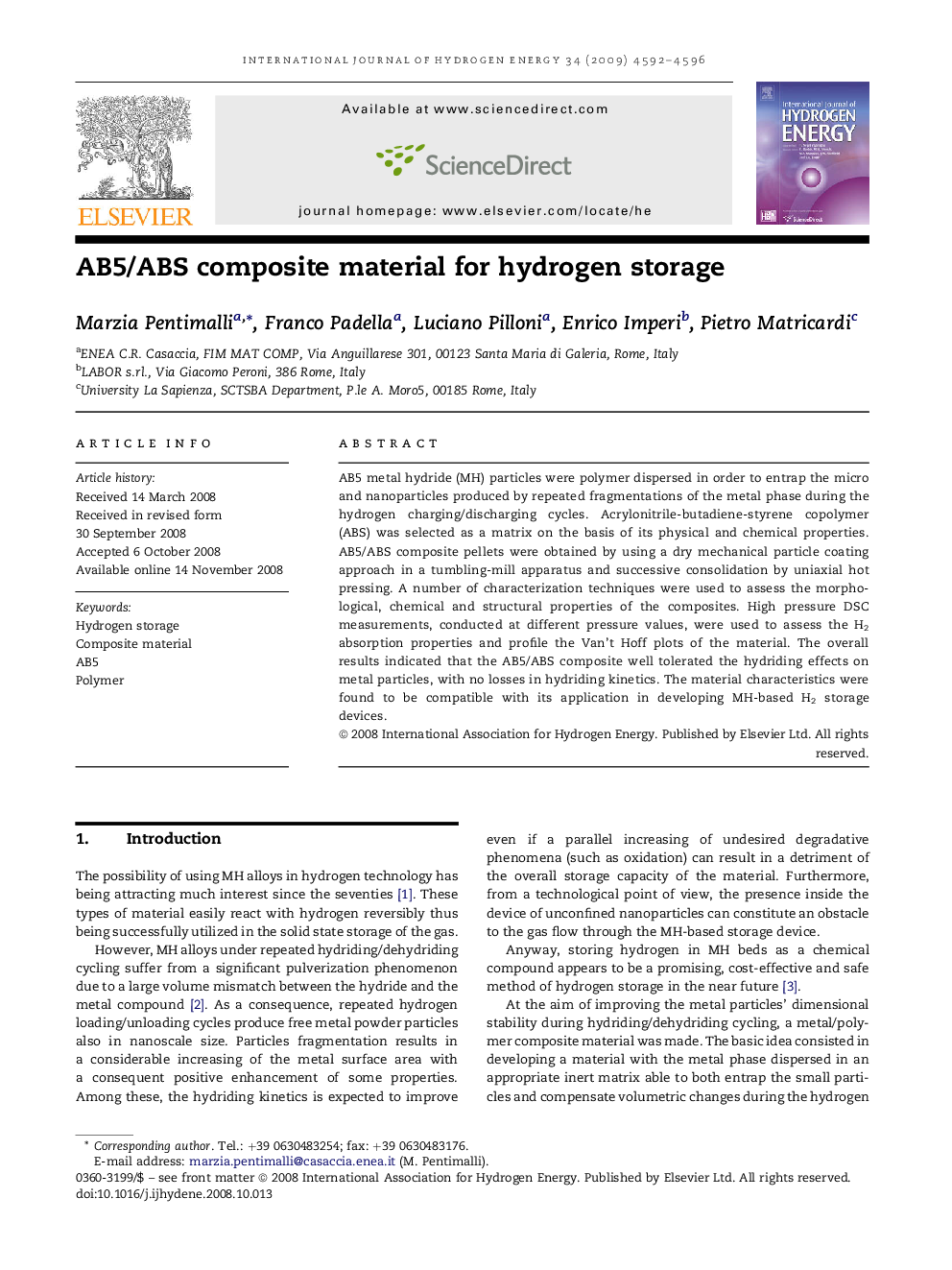| Article ID | Journal | Published Year | Pages | File Type |
|---|---|---|---|---|
| 1273876 | International Journal of Hydrogen Energy | 2009 | 5 Pages |
AB5 metal hydride (MH) particles were polymer dispersed in order to entrap the micro and nanoparticles produced by repeated fragmentations of the metal phase during the hydrogen charging/discharging cycles. Acrylonitrile-butadiene-styrene copolymer (ABS) was selected as a matrix on the basis of its physical and chemical properties. AB5/ABS composite pellets were obtained by using a dry mechanical particle coating approach in a tumbling-mill apparatus and successive consolidation by uniaxial hot pressing. A number of characterization techniques were used to assess the morphological, chemical and structural properties of the composites. High pressure DSC measurements, conducted at different pressure values, were used to assess the H2 absorption properties and profile the Van't Hoff plots of the material. The overall results indicated that the AB5/ABS composite well tolerated the hydriding effects on metal particles, with no losses in hydriding kinetics. The material characteristics were found to be compatible with its application in developing MH-based H2 storage devices.
